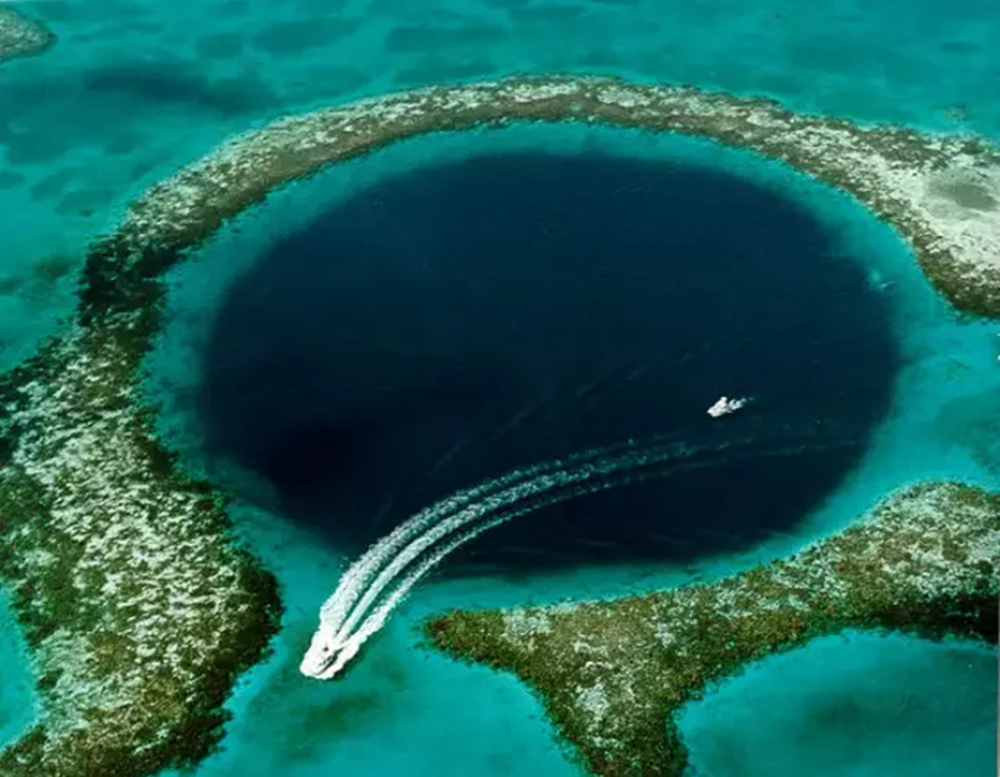- Courses
- GS Full Course 1 Year
- GS Full Course 2 Year
- GS Full Course 3 Year
- GS Full Course Till Selection
- Answer Alpha: Mains 2025 Mentorship
- MEP (Mains Enrichment Programme) Data, Facts
- Essay Target – 150+ Marks
- Online Program
- GS Recorded Course
- Polity
- Geography
- Economy
- Ancient, Medieval and Art & Culture AMAC
- Modern India, Post Independence & World History
- Environment
- Governance
- Science & Technology
- International Relations and Internal Security
- Disaster Management
- Ethics
- NCERT Current Affairs
- Indian Society and Social Issue
- NCERT- Science and Technology
- NCERT - Geography
- NCERT - Ancient History
- NCERT- World History
- NCERT Modern History
- CSAT
- 5 LAYERED ARJUNA Mentorship
- Public Administration Optional
- ABOUT US
- OUR TOPPERS
- TEST SERIES
- FREE STUDY MATERIAL
- VIDEOS
- CONTACT US
World's deepest blue hole discovered in Mexico
World's deepest blue hole discovered in Mexico
02-05-2024

Researchers have discovered the world’s deepest blue hole in Mexico, but the catch is they haven’t reached its bottom yet.
- The site named Taam Ja’ Blue Hole (TJBH) is now the deepest known underwater sinkhole in the world. The measurements show TJBH extends at least 1,380 feet (420 metres) below sea level.
- The newly found deepest blue hole, situated in Chetumal Bay off the southeast coast of the Yucatan Peninsula.
What are Blue Holes?
- Blue holes are water-filled vertical caverns or sinkholes found in coastal regions with bedrock made of soluble materials, like limestone, marble, or gypsum.
- They are formed when water seeps through the rock on the surface, dissolving minerals and widening cracks, leading to the eventual collapse of the rock.
- Notable examples include Dean's Blue Hole in the Bahamas, Dahab Blue Hole in Egypt, and the Great Blue Hole in Belize.
Taam Ja' Blue Hole Characteristics:
- It holds the title of the deepest known underwater sinkhole globally.
- The sinkhole is situated in Chetumal Bay off the southeast coast of the Yucatan Peninsula in Mexico.
- It extends to at least 1,380 feet (420 meters) below sea level.
a. This depth surpasses the previous record holder, the 990-foot-deep (301 m) Sansha Yongle Blue Hole, also known as the Dragon Hole, in the South China Sea. - "Taam Ja'," meaning "deep water."
- The submerged Blue Hole shows a nearly spherical shape on its surface, with a large conical structure covered in biofilm, sediment, limestone, and gypsum at its edge.
About the Yucatan Peninsula:
- The peninsula is the northeastern extension of Central America that extends to the Atlantic Ocean.
- The Gulf of Mexico lies on its western and northern sides, while the Caribbean Sea borders its eastern side.
- The northern part of Yucatan is in Mexico, while the southern part is in Belize and some parts of Guatemala.
- The peninsula is composed primarily of beds of coralline and porous limestone rocks.
What is a Sinkhole?
- A sinkhole is a depression or hole in the ground that forms when water dissolves surface rock, often limestone, which is easily eroded by the movement of water.
- Sinkholes can also form due to the collapse of cave roofs. They are usually funnel-shaped, with the wide end open at the surface and the narrow end at the bottom of the pool.
Must Check: Best IAS Coaching In Delhi



